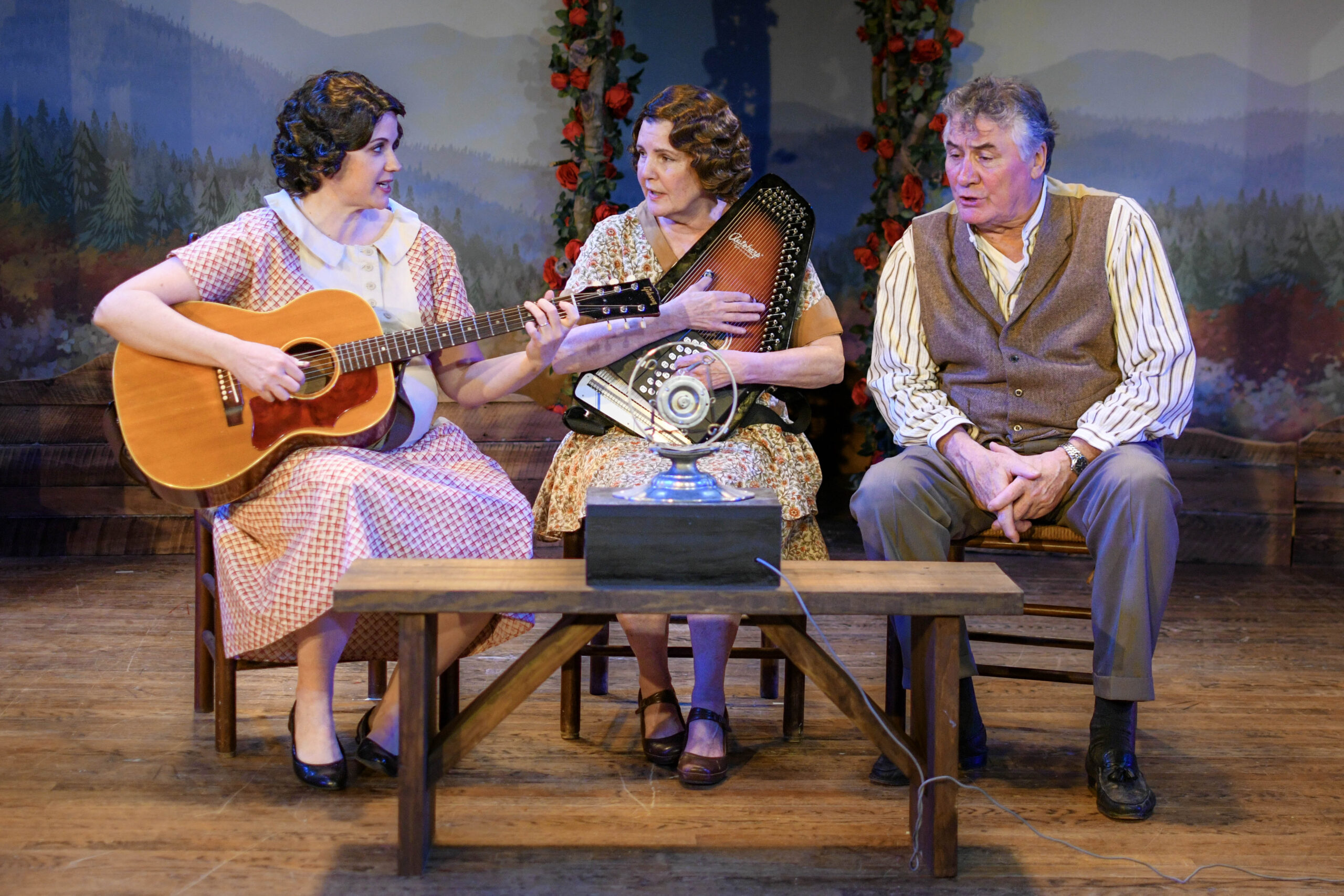The Little Mermaid: Magic Made Simple
By A. A. “Corbin” Puryear
While touring Snow White and the Seven Dwarves, my castmates and I often find ourselves answering our young audiences’ queries of why the dwarves’ names are different from the Disney classic they know. This weekend, the children visiting The Whistle Stop Theatre Company in Ashland, VA may have similar questions. On October 25 and 26 at 2 pm and 4 pm at the Ashland Firehouse Theater, they will be guided deftly into the enchanting world of The Little Mermaid without ever hearing the name Ariel or meeting her sea critter friends Sebastian and Flounder.
Instead, playwright Louise Keeton and composer Samuel Aaron have adapted this classic fairy tale straight from its Hans Christian Anderson roots, proving that they can successfully create magic with nothing more than barebones storytelling. Devoid of Disney trademarks and elaborate special effects, Keeton and her team of savvy theatre artists have re-imagined The Little Mermaid story with an elegant simplicity, relying on classic theatrical devices that would make the ancient Greeks and Shakespeare proud.
It’s a good thing too, because the original source material is more interesting than its Disney spin-off. In both Anderson’s original tale and the Keeton/Aaron adaptation, the Little Mermaid (played by Nancy Kent Collie) becomes fascinated with the humans above the sea when her father the Sea King (Fred Horn) tells her how humans have souls. While mermaids will disintegrate into sea foam upon their deaths, humans have the ability to live on forever through their souls if they should find true love. The Little Mermaid, youngest of five sisters, waits impatiently until her 15th birthday when she is finally old enough to rise above the surface and see the humans for herself. It is there she meets and saves a kind prince (Chandler Hubbard), falls in loves with him, and then resolves to become human and gain an immortal soul. With the help of the villainous Sea Witch (Ella Mort), she exchanges her voice to live amongst the humans. A love triangle ensues when the Little Mermaid learns her prince has fallen for a human princess (Sara Ann Meinhofer). What follows after may not be quite what you remember from the Disney story, but it’s definitely enticing enough to find out what happens next!
Nancy Kent Collie captures the title character’s youthful eagerness with effortless charm, and has the voice to pull off the several challenging and well-written solo numbers. She carries children and adults alike through this young girl’s story, displaying equal parts wonder in her search for an immortal soul and pure affection for her human prince with a demeanor of child-like innocence.
In addition to their roles as the Sea King and music composer/director respectively, Horn and Aaron show off their impressive skills as musicians. Rather than relying on a full orchestra or pre-recorded sound cues, all of The Little Mermaid’s music is provided live by nothing more than Horn’s superb piano playing and Aaron’s multiple talents on the flute, ukulele, and hand percussion.
The role-doubling doesn’t end there; Keeton has charged the rest of her outstanding ensemble to employ this classic theatrical device. Craig Keeton, Barbara Keeton, Caitlin Rose Sneed, Patrick Warren, and Kathy Abbot lend their simultaneously commanding and soothing voices as the show’s chorus of narrators while also revealing themselves as the mysterious Children of the Air. Mort and Meinhofer join Renee McGowan and Elena Riderer as the Little Mermaid’s older sisters, and they do an excellent job differentiating their characters in the process. All four actresses provide a lovely blend of singing voices, and their portrayal as condemning older sisters serves to help the audience sympathize even more with the curious Little Mermaid. Hubbard, while displaying the charming and kind demeanor of a prince with relative ease, occasionally breaks away from his royal role to join the mermaid ensemble in painting each scene with stylized theatrical movement.
Since the set is nothing more than five chairs and a black curtain, director Louise Keeton, has tasked these five actors with using nothing more than their bodies and voices to simulate shipwrecks, crashing waves, and much more. At times, her choreography is both comical and eye-catching, while also providing for some of the show’s more dramatic moments as well. When the Little Mermaid visits the Sea Witch’s lair, her fear becomes palpable when Hubbard and the company of mermaid princesses use jerky mannerisms to portray monstrous fish.
Aaron’s inventive music was brought to life with Karen Stanley’s choreography. Somehow she was able to take five actors and make them as large and impressive as a Broadway ensemble. Each line of music illustrated with creative, exciting movement to delight the entire audience, adults and children alike.
An incredible, ensemble-driven piece, the cast of The Little Mermaid works seamlessly together to spin a tale of magic and enchantment while relying on very few gimmicks. It is a wonderful example of what good theatre can be, and I applaud Louise Keeton, Samuel Aaron, and the rest of the Whistle Stop Theatre Company for their dedication to bringing it to the children and families of Ashland, VA.
There is still time to buy tickets for this weekend! You can reserve them now by emailing whistlestoptheatre@gmail.com, and you can also visit the Whistle Stop Theatre’s website for more information!







